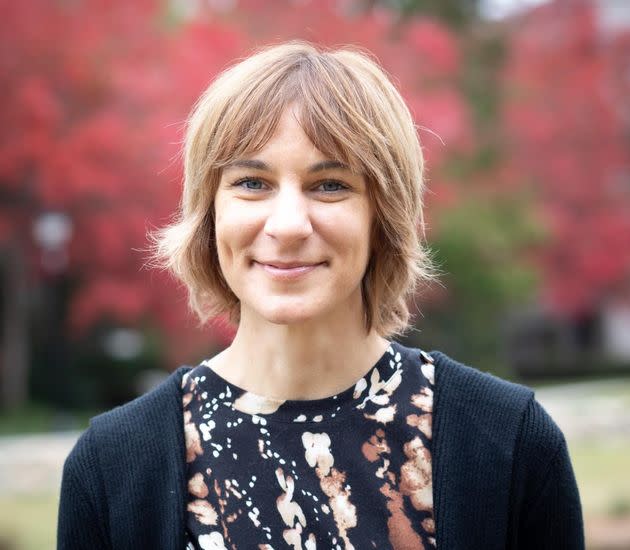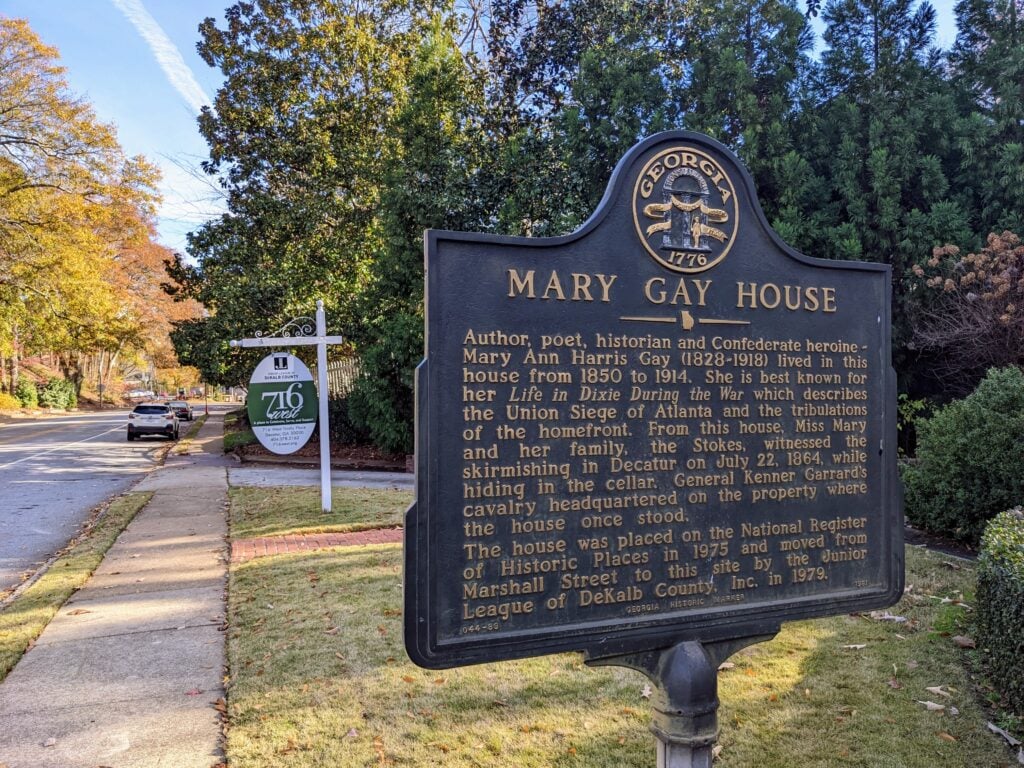
“Finally, at 40, I was ready to figure out what I wanted,” the author writes.
My early experiences of queerness could have been scenes in a cliché coming-of-age story. Open on the interior of a dim bedroom. Two preteen girls — one with a mop of dark curls, the other, me, in a crisp bob with thick bangs — negotiate who will be “the boy” in their kissing practice.
Fade to the interior of a Jeep five years later. Outside, rain is coming down in sheets. No Doubt’s “Tragic Kingdom” plays on the stereo. A blond girl with glitter in the corner of her eyes sits in the driver’s seat. Beside her is one of the girls from the previous scene, hair longer, but with the same heavy bangs. The rain makes beautiful slippery patterns on their bodies. They grip their knees to keep from reaching toward each other.
Then we see them in a bedroom, sitting on a massive waterbed. The blond girl reaches toward the other one, kissing and grabbing at her breasts, giggling. The other girl pulls away. Then there’s a montage of the blond girl skinny-dipping with groups of other teens, dancing naked with a group around a bonfire, her and the girl with bangs making out with different guys on opposite sides of the waterbed, and finally, after a tearful argument, the girl with bangs walking away.
In the mid-’90s, while I was struggling with guilt and confusion over being attracted to a girl — and her attraction to many people simultaneously — the term “queer” was shifting from an insulting label to an empowering verb as a new framework, queer theory, was uniting academics interested in sexuality and gender that fell outside of heterosexual norms. “Queering” was about more than just sexuality and gender, it also subverted the dominant culture’s position on sex and relationships, what families looked like and how they were formed. It challenged conventional narratives about identity, monogamy and more.
I was far from ready for such an unconventional lens. Just kissing a girl felt like dangerous boundary-crossing, but the girl I was kissing was ready to throw off the whole structure of heteronormativity. Unable to understand each other’s perspectives, we broke up, and, at 15 years old, I went back to dating men. It was easier than figuring out my sexual identity.
I never thought of myself as gay back then. I was attracted to men, after all, and bisexuality was treated with deep skepticism in the ’90s. The few gay people I knew all explained themselves by saying their sexuality wasn’t a choice. As someone who was attracted to both men and women, it felt like the only defensible thing to do was choose the thing that would make everyone more comfortable.
This logic held through high school. I alternated between periods of exclusivity with guys who wanted to be my boyfriend (even ones I wasn’t particularly attracted to) and periods of what I thought of as “wild flirtatiousness,” where I’d make out with a bunch of different guys. I always had multiple crushes, which I felt deeply ashamed about. I also had a female best friend I found beautiful in a way that made me want to touch her stomach, though I never did. When I was 18, I left my conservative hometown for the closest city. I’d only been there a few months when I met a woman who I found so absolutely magnetic that I decided I must be a lesbian. I called my parents and announced my new sexual orientation ― they responded, predictably, by telling me I was going to hell.
The woman and I moved in together. I was intensely curious about her body, but she quickly established that touching her was off-limits ― she would only touch me. She kept me carefully separated from her friends and prided herself on dating “straight” girls, a category she insistently included me in. When our relationship ended, after three years, she found another “straight” girl, and I was left without any connection to the gay community, embarrassed with how little experience I had at pleasuring a woman, and lingering Christian shame about what sex and love were supposed to look like. For a year I pined after my ex, then I started dating a boring, financially successful guy who pushed for me to grow my hair long and shop at Banana Republic.
I dated another guy, then another. Concurrently, I had a series of intensely close friendships with women, a few of which eventually led to some sort of sexual or romantic climax — a kiss, a hug, a prolonged gaze — that either suddenly ended the friendship or marked the beginning of a measured pulling away. I gradually came to accept that I was bisexual, but I lived like a straight person, even though I often found dating men stifling and frustrating.
Then one of my relationships with a man stretched beyond the usual two-to-three years to five, then six. There was talk of marriage, which panicked me even as I tried to tell myself it was what I wanted. When the relationship ended, I was sad, but also relieved. I moved out and found myself in a whole new cliché: the midlife crisis.
Finally, at 40, I was ready to figure out what I wanted. I was tired of monogamy, of gender roles, of forcing my feet into heels and my body into size 6 jeans, of sex that stuck to a predictable script, of every relationship following the same trajectory. I found myself coming out again, not as gay or bi or even pansexual, but as queer, an identity that implied a comprehensive rejection of sexual and romantic norms.
For many people born before Generation Z, making choices about our sexuality feels self-indulgent. We grew up in a time when queerness was seen as unnatural and wrong, where gay and straight were two opposing teams that everyone was expected to choose between.
If I was 20 years younger, this identity wouldn’t feel so out of place. At the college where I teach, a number of my students identify as queer and nonbinary, but among my colleagues and friends who are elder millennials, I still see a lot of repression of bisexuality, rigidity around relationship structures, and discomfort about exploring gender identities outside the male/female binary.
For many people born before Generation Z, making choices about our sexuality feels self-indulgent. We grew up in a time when queerness was seen as unnatural and wrong, where gay and straight were two opposing teams that everyone was expected to choose between. I spent a lot of years buying into that, but I’m finally learning to accept that my sexuality doesn’t fit neatly into a pre-established category and finding ways to queer my relationships, regardless of the gender of my partners.
What that looks like is complicated. It also has a lot to do with community and visibility. I’ve immersed myself in queer podcasts, TV shows and music. I go on the monthly hikes hosted by a local LGBTQ+ organization, and I’ve joined a queer book club. I identify myself as queer to my students and colleagues at the college where I teach. I’ve come out again to my family and my friends, most of whom have assured me that they still love me, and a few of whom have taken an interest. I’ve begun to see queerness as an intrinsic part of me, not as something dependent on who I’m dating.
I’m expressing my gender in a way that feels more authentic and fluid. I’ve cut my hair short and donated most of my dresses. I choose clothes that I feel good in, even if they don’t follow the rules of what’s flattering or sexy to others. I am working on accepting my body instead of trying to force it into a particular size and shape.
Love and connection are deeply important to me, but I’ve learned I’m happiest living alone, and I don’t want children. I’m no longer willing to follow the old familiar story that tells us love is possessive, and unidirectional, that it only counts if it is romantic, reserved for one person and if it lasts forever. When I meet someone I like, I try to explore the connection with an open mind, and if something doesn’t work, I take a step back instead of cutting things off forever. I build relationships that feel good to me, even if they look strange to other people.
In the final scene of that movie that began playing all those years ago, the girl with bangs ― a woman now ― is having dinner with three other people. The man beside her, whom she’s loved for eight years, touches her knee under the table, a gesture of reassurance and affection. She smiles at him, then turns her attention to a blond woman across from her, asks if she wants more food, then gets up to clear the table. The two women stand close as they make tea and plan when to see each other again. When it’s time to leave, they hug for a long time, before the blond woman and her partner say their goodbyes. The woman with bangs and the man she’s known for eight years sit side by side on the couch, holding hands. They discuss all the ways they’ve been together and apart and all the possibilities that lie before them. It’s a life that she’s still figuring out ― one that sometimes frightens her ― but it is the life she has chosen, one she has built from her deepest needs and desires. It feels right to choose, right to be fluid, right to be different. Strange. Queer.
Laura M. Martin lives in South Carolina where she teaches at a small university, tends an unruly and mostly edible garden, and works on her memoir. You can find her on instagram @LauraMMWriter.
Do you have a compelling personal story you’d like to see published on HuffPost? Find out what we’re looking for here and send us a pitch.







